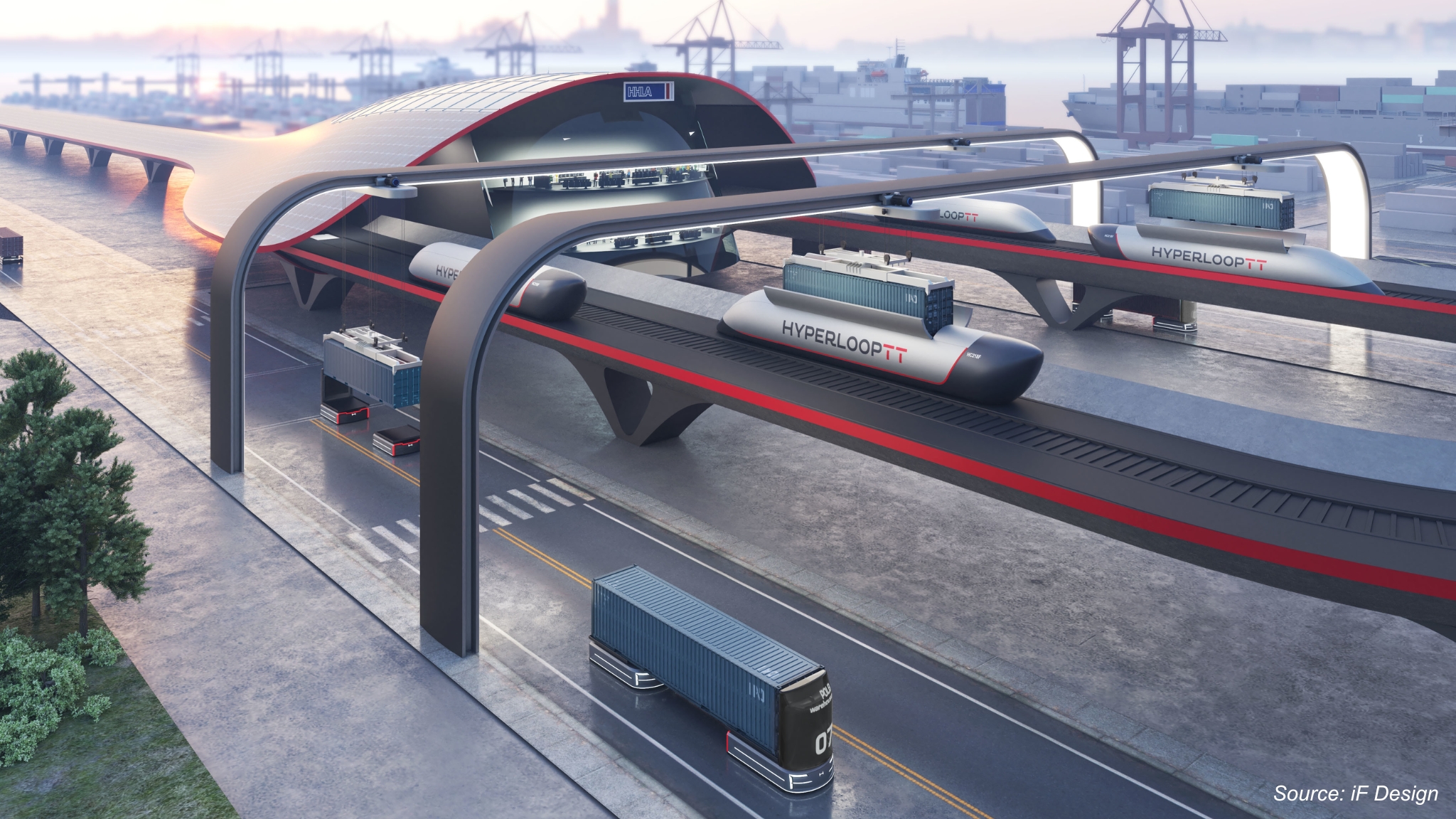
Unmanned Ground Vehicle (UGV) Market by Mode of Operation (Teleoperated and Autonomous), by Mode of Locomotion (Tracked, Wheeled, Legged, and Hybrid), by Size (Small, Medium, and Heavy), by End-User Industry (Military & Defense, Agriculture, Mining, Law Enforcement, and Others) – Global Opportunity Analysis and Industry Forecast, 2023–2030
Industry: Automotive & Transportation | Publish Date: 19-May-2025 | No of Pages: 618 | No. of Tables: 457 | No. of Figures: 402 | Format: PDF | Report Code : AT77
Market Overview
The global Unmanned Ground Vehicle (UGV) Market size was valued at USD 2.25 billion in 2022 and is expected to reach USD 4.08 billion by 2030, with a CAGR of 6.9% from 2023 to 2030. Unmanned ground vehicles (UGVs) are robots designed to operate on land without a human operator. They come in a range of sizes, from small and lightweight robots that a single person can carry to larger and rugged vehicles that can travel over rough terrains.
Some UGVs are designed for specific tasks, such as inspecting pipelines or hazardous materials, while others are more versatile and can be customized for different applications. These vehicles are equipped with sensors, cameras, and other specialized equipment to enable them to perform various tasks.
UGVs are used for various tasks, including inspection, surveillance, mapping, and search & rescue operations. These vehicles are typically used for hazardous, dull, or dirty tasks, and can be deployed in various environments, including urban, rural, and off-road settings. These can also be used in various applications, including military, search & rescue, agriculture, and transportation.
UGVs can be either fully autonomous and can navigate & make decisions on their own or operated remotely by a human operator. One of the main advantages of UGVs is that they can perform tasks in environments that are dangerous or inaccessible to humans.
For instance, they are used to defuse bombs, inspect hazardous chemical spills, or search for survivors in collapsed buildings. These vehicles are used for tasks that are tedious or monotonous for humans, such as surveillance or patrolling. They can also be used in agriculture and forestry for tasks, such as mapping & monitoring crops or inspecting & maintaining irrigation systems.
Increasing Adoption of UGVs in Military and Defense is Fueling the Market Growth
One of the key drivers of the unmanned ground vehicle market is the rise in the adoption of UGVs in military and defense organizations. They are used increasingly in military operations, and this trend is expected to continue in the future as militaries around the globe are looking forward to reducing the number of soldiers deployed in combat situations.
These vehicles are used for various tasks in the military & defense sector, including logistics, bomb disposal, and surveillance. They operate in hazardous environments and perform highly dangerous tasks. UGVs provide a safer and more efficient alternative to human labor, reducing the risk to personnel and improving efficiency in various operations.
UGVs in military and defense operations also allow greater flexibility and adaptability in changing environments, as these can be remotely controlled and perform tasks in hazardous conditions. In addition, UGVs can work continuously without the need for breaks, leading to increased efficiency and productivity. As a result, there is an increase in the adoption of UGVs in military and defense applications, which propels market growth.
The Growing Use of UGVs in Commercial and Industrial Applications
The rise in the use of UGVs in commercial and industrial applications is another factor that propels the market growth. UGVs are increasingly adopted by various industries, such as agriculture, transportation, and logistics, and this trend is expected to continue as companies look for ways to reduce costs and improve efficiency.
In the agriculture industry, UGVs can be used for tasks such as crop monitoring and pest control, enhancing productivity and reducing the need for manual labor. In the transportation & logistics industry, they can be used for tasks such as package delivery, reducing the need for human drivers.
The use of UGVs in commercial and industrial applications allows for increased productivity and cost savings as these vehicles can work around the clock without the need for breaks. Hence, the growth in the use of UGVs in commercial and industrial applications is further expected to propel the unmanned ground vehicle market growth.
High Cost and Lack of Standardization of UGVs Restrain the Market Growth
The high cost of development and deployment of UGVs is one of the major reasons that hinder the growth of the market. UGVs are typically expensive to develop and produce, which may discourage some companies or organizations from investing in them. These vehicles require advanced technologies and specialized components, which are expensive to produce & maintain. In addition, the integration of UGVs into existing systems and processes can be complex and time-consuming, which also increases the cost.
Moreover, the lack of standardization in the UGV market also hinders its growth. Different types and sizes of UGVs are available. They are often customized for specific tasks or environments. This makes it difficult for companies to choose the right UGV for their needs and challenging for UGV manufacturers to produce products compatible with different systems and applications.
The Convergence of AI and the Advancement of Intelligent UGVs Generate Numerous Opportunities
The implementation of artificial intelligence (AI) in UGVs creates new opportunities for the development of intelligent UGVs. These UGVs are equipped with advanced technologies such as machine learning and natural language processing, which allows them to perform tasks with a higher level of autonomy and decision-making capabilities. This, in turn, helps them work with increased accuracy and reliability, making them valuable assets in various industries.
This trend toward intelligent UGVs can revolutionize various industries by increasing efficiency, reducing the need for human labor, and improving safety. In the military & defense sector, intelligent UGVs are used for reconnaissance and surveillance, providing valuable intelligence and reducing the risk to human personnel.
In the agriculture industry, intelligent UGVs are used for tasks such as precision farming, improving crop yields, and reducing the use of resources. Hence, the development of intelligent UGVs is a major opportunity for the market, as it can significantly impact various industries and create new opportunities for growth and innovation.
North America Holds the Dominant Market Share in the Unmanned Ground Vehicle Market
North America is expected to steadily rise in the UGV market, owing to increased expenditure on military sectors in countries such as the U.S. and Canada. As governments invest more resources in their military capabilities, there is a corresponding increase in demand for UGVs for various military applications, such as surveillance, reconnaissance, and explosive ordnance disposal.
UGVs in these applications provide military forces with increased capabilities while reducing risks to human operators. In addition, the increase in the deployment of UGVs in various industries, such as mining, agriculture, and military industries, propels the growth and development of UGVs in this region.
Moreover, the increase in benefits of robots for people and the rise in support from governments for the development and integration of robotics in the region are expected to accelerate the growth of the UGV market. For instance, in February 2021, the National Science Foundation (NSF) issued a new National Robotics Initiative (NRI) named NRI-3.0: Innovations in Integration of Robotics. The new initiative promoted fundamental research in the U.S. to enhance the science of robot integration. The initiative funds research initiatives that encourage the use of robots in ways that benefit people, such as improving their flexibility and safety.
Asia-Pacific is Expected to Show Steady Growth in the Global Unmanned Ground Vehicle Market
The Asia-Pacific UGV market is expected to witness significant growth, owing to increased spending in the defense sector in countries, such as China, India, and Japan. Countries in Asia-Pacific increased their defense spending, which indicates increased investment in new technologies and equipment including UGVs. This step has been taken to improve their military capabilities and infrastructure. This, in turn, accelerates the growth of the unmanned ground vehicle market.
In addition, an increase in government initiatives and investments in research & development activities for UGV projects helped companies in the countries of this region to develop advanced UGV technology and compete in the global market. This factor is further expected to boost the growth of the market.
Moreover, the presence of advanced technologies and the robotics industry in countries such as China and Japan have resulted in a significant increase in UGV use in this region. Innovation in robotics and automation in various industries, such as manufacturing, logistics, and agriculture, have led to a rise in demand for UGVs. This, in turn, is expected to drive the growth of the unmanned ground vehicle market in this region.
Competitive Landscape
Several market players operating in the unmanned ground vehicle industry include ABB Ltd, Robot Solutions, Rheinmetall Nordic AS, HAVELSAN, Teledyne FLIR LLC, Lockheed Martin Corporation, Milrem, FENKA Robotics, Rheinmetall AG, Elbit System, Telerob GmbH, BAE Systems, Northrop Grumman Corporation, L3Harris, QinetiQ. These market players are adopting strategies such as product launches across various regions to maintain their dominance in the global market.
For instance, in November 2022, General Dynamics supplied the U.S. Army with Small Multipurpose Equipment Transport (S-MET) vehicles. These vehicles will function as robotic mules, effectively alleviating the weight of equipment transportation. These S-MET vehicles are designed with eight wheels and incorporate advanced robotic technology to assist soldiers on foot.
Moreover, in September 2022, QinetiQ launched Talon 6 EOD UGV. The Talon 6 is the latest series of EOD UGVs developed by QinetiQ. The Talon 6 features interoperability (IOP) ports on the arm, easing the integration of sensors and other payloads.
Unmanned Ground Vehicle Market Key Segments
By Mode of Operation
-
Teleoperated
-
Autonomous
-
Hybrid
By Mode of Locomotion
-
Tracked
-
Wheeled
-
Legged
-
Hybrid
By Range
-
Short Distance
-
Long Distance
By Technology
-
AI and Machine Learning-based UGVs
-
GPS-based UGVs
-
LIDAR-based UGVs
-
Computer Vision-based UGVs
By Application
-
Military and Defense
-
Agriculture
-
Industrial and Logistics
-
Mining and Construction
-
Search and Rescue
-
Environmental and Scientific Exploration
By Size
-
Small
-
Medium
-
Heavy
By End-User Industry
-
Military and Defense
-
Agriculture
-
Mining
-
Law Enforcement
-
Others
By Region
-
North America
-
U.S.
-
Canada
-
Mexico
-
-
Europe
-
U.K.
-
Germany
-
France
-
Spain
-
Italy
-
Netherlands
-
Denmark
-
Finland
-
Norway
-
Sweden
-
Russia
-
Rest of Europe
-
-
Asia-Pacific
-
China
-
Japan
-
India
-
Australia
-
South Korea
-
Indonesia
-
Thailand
-
Taiwan
-
Singapore
-
Rest of Asia-Pacific
-
-
Rest of the World (RoW)
-
Latin America
-
Middle East
-
Africa
-
Key Players:
-
ABB Ltd
-
Robot Solutions
-
Rheinmetall Nordic AS
-
HAVELSAN
-
Teledyne FLIR LLC
-
Lockheed Martin Corporation
-
Milrem
-
FENKA Robotics
-
Rheinmetall AG
-
Elbit System
-
Telerob GmbH
-
BAE Systems
-
Northrop Grumman Corporation
-
L3Harris
-
QinetiQ
Report Scope and Segmentation
|
Parameters |
Details |
|
Market Size in 2022 |
USD 2.25 Billion |
|
Revenue Forecast in 2030 |
USD 4.08 Billion |
|
Growth Rate |
CAGR of 6.9% from 2023 to 2030 |
|
Analysis Period |
2023–2030 |
|
Base Year Considered |
2022 |
|
Forecast Period |
2023–2030 |
|
Market Size Estimation |
Billion (USD) |
|
Growth Factors |
Increasing adoption of UGVs in military and defense The growing use of UGVs for commercial and industrial applications |
|
Countries Covered |
28 |
|
Companies Profiled |
15 |
|
Market Share |
Available for 10 companies |
|
Customization Scope |
Free customization (equivalent up to 80 working hours of analysts) after purchase. Addition or alteration to country, regional, and segment scope. |
|
Pricing and Purchase Options |
Avail customized purchase options to meet your exact research needs. |




















 Speak to Our Analyst
Speak to Our Analyst

























